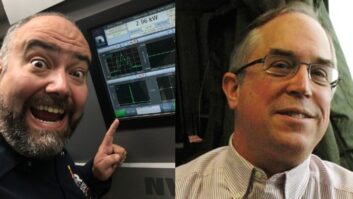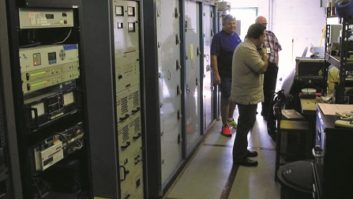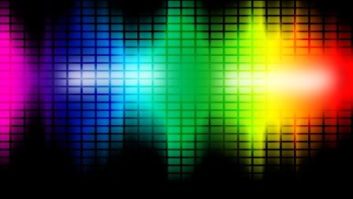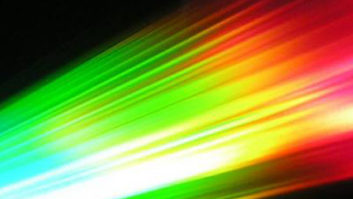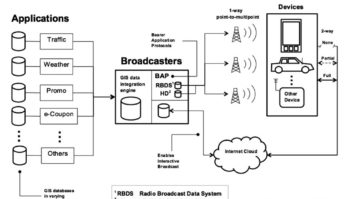Digital in-band, on-channel (IBOC) radio, commercially known as HD Radio, has grown from its beginnings in the first decade of this century into a significant broadcast medium. The FCC’s Media Bureau lists 1,835 FM and 240 AM stations authorized to transmit the digital audio broadcast system, and the website of iBiquity Digital Corp., the technology’s developer, reports that every 4.5 seconds, a new car is sold with an HD Radio receiver. Listeners increasingly use HD Radio, and in dozens of radio markets, drivers depend on HD Radio to receive live traffic data. For radio multicast (HD2 and HD3) programming, over-the-air digital reception is essential.
This importance to broadcasters and listeners raises the question: “Is it time for HD Radio to receive allocations protection by the FCC?” This article describes the real technical effects on HD Radio reception and the potential impact on the current, analog-only allocations system. I will also describe the technology to adequately measure and report this impact, which was developed over several years with public projects supported by the Corporation for Public Broadcasting and the Public Telecommunications Facilities Program.
When HD Radio was adopted by the FCC’s First Report And Order, October 2002, it specified parameters for the transmission of in-band on-channel signals, and addressed compatibility issues with the host FM analog signals, but it did not include regulations for the interaction between FM stations carrying the new signal. The commission acknowledged the potential for interference to analog FM reception on first-and second-adjacent channels, and relied on the NRSC’s reports of testing of interference compatibility with neighboring FM stations. It did not introduce any regulations that would address the reverse, that is, interference from neighboring FM stations to a new IBOC service.

WHY NO ALLOCATION PLAN FROM THE BEGINNING?
It could be argued that at the time, the HD Radio services were fledgling add-ons that replicated the host’s FM audio service, and the overlay of an allocations scheme on the analog-to-analog FM allocations rules would be cumbersome. Fig. 1 illustrates a hybrid FM-digital channel spectrum, with the digital sidebands placed 129 to 198 kHz from the center of the FM channel for the primary MP1 mode (and 114 to 198 kHz with the addition of the secondary MP3 mode). As the digital sidebands were treated as an intrinsic part of the FM station’s signal, regulators treated it like a SCA or RBDS service.

Introducing allocation rules to consider existing HD Radio services is no easier today — perhaps worse because of the range of IBOC injection ratios and asymmetrical sidebands. If stations are willing to overlook interference to their HD Radio services, this matter might remain dormant, perhaps until digital-only HD Radio is faced.
The impact of analog FM signals to IBOC reception was established in two large studies: the Digital Radio Coverage and Interference Assessment (DRCIA) in 2007–2008 and the Advanced IBOC Coverage and Compatibility Study (AICCS) in 2009–2010. Both were funded by the Corporation for Public Broadcasting and carried out by NPR Labs.
The first step in allocations standards is to understand the minimum signal required for service. NPR Labs’ studies of numerous receivers were collected to verify the “link budget” calculations that accounted for the gains and losses from transmitter through free space to the consumer receiver. The values measured from the receivers are shown in Table 1, which has been the basis for many coverage studies, with minimal adjustment to suit specific conditions.
The field strengths may be unfamiliar in comparison with the FCC’s standards, such as 60 dBu for a protected service contour. However, the FCC’s definition of service is based on field strength at 9.1 meters above ground, at which the television and FM curves were developed in the late 1940s. This height was based on the likely location of a consumer’s outdoor TV/FM aerial: The roof of a multistory home.
The field strengths in Table 1 are independent of receive height, and are applicable for terrain-sensitive models that may predict the field at only one or two meters above ground — the height of a vehicle, for instance. Any specification for audio reception is based on subjective factors such as time-variant noise levels or digital signal dropout as well, so “your mileage may vary.”
One should also note that the minimum IBOC field strengths are based on 1 percent (–23 dBc) injection; as an approximation, one can reduce the field strength required by 1 dB for every 1 dB increase in the amount of injection above 1 percent. For example, a 4 percent injection is an increase of 6 dB (43 – 6 = 37 dBu).
THE STUDY RETURNED UNEXPECTED RESULTS
In the early stages of the DRCIA study, field studies collected at FM stations across the country showed a curious variation in signal requirements. Fig. 2 illustrates the conditions: By looking across the top of the chart, it can be seen with these three stations the field strength for the same reception availability varies by almost 15 dB. If HD Radio was impervious to signal interference, we would expect availability to degrade for all stations according to signal strength, but that is far from the case with these examples. Interference is affecting the HD Radio reception — more on that in a moment.

To understand this curious variation, one must recall the interference protection ratios for analog FM radio are well known and are the basis for the FCC’s allocations standards. These standards define the maximum allowable field strength of an interfering signal at the service contour of a “protected” FM station. For example, it is defined for reserved-band (non-commercial) FM stations in Section 73.509(a) of the FCC’s rules. See Table 2.

The chart shows that a 20 dB ratio is required between a protected FM station, labeled “D” in the Desired/Undesired (D/U) ratio, and a proposed FM station, labeled “U”: (60 dBu – 40 dBu = 20 dB). This relationship is illustrated in Fig. 3, with the desired hybrid signal in green, with a D/U ratio of 20 dB.

First-adjacent stations, illustrated in Fig. 4, require a D/U ratio of only 6 dB, while second- and third-adjacent stations require only a minus 40 dB D/U ratio. We should note that these FM ratios were derived in an era of monophonic broadcasting. Stereo FM, which was introduced later, requires larger (more positive) D/U ratios, but monophonic ratios continue to be used despite the dominance of stereo for FM broadcasting.

THE HD RADIO DIFFERENCE
Like FM broadcasts, HD Radio is subject to noise and signal interference, but the ratios differ in two important ways: magnitude and number of interferers. Table 3 shows average D/U ratios from hybrid receivers tested for DRCIA with a single interfering signal. The lower values indicate that digital reception is much more tolerant to interference than analog FM: from 13 to 17 dB lower for co-channel signals and 7 to 8 dB for first-adjacent channel signals. Clearly, HD Radio is protected from single co- and first-adjacent interferers that protect the host FM with the under the FM allocation rules.

As is clear from Fig. 1, HD Radio with its two offset sidebands has a very different structure than analog FM, where the great majority of the signal is contained within one central 200 kHz block of spectrum. In the FM allocations system, adjacent channel interference is considered separately from each potential interferer, whether it is above or below the protected FM channel. As we saw above, HD Radio carries the data on both of its sidebands and interference from a single interferer is dealt with far better than analog FM. However FM allocations are oblivious to the effects of two interferers, with the relationship illustrated in Fig. 5. This condition damages the data reception on both digital sidebands. The development and testing of a computer software-based model was conducted under the DRCIA and AICCS projects. The author invented a novel algorithm for predicting digital reception in these conditions, for which a U.S. patent was awarded [see Reference 1].

VERIFYING THE DIGITAL RECEPTION MODEL
After a practical model was developed, mobile drive-test measurements were carried out on 11 stations across the United States to determine the model’s accuracy. A wide range of station classes, geography and levels of interference were represented. A custom field test unit was built around the Kenwood KTC-HR100 automotive tuner, and it could simultaneously record calibrated field strength from the desired station, and upper and lower first-adjacent channels, along with GPS location. Analysis of several thousand miles and hundreds of thousands of points of data showed that the model could predict each digital reception point with greater than 90 percent accuracy using the three field strengths.

Geographic mapping software was built around the model, using digitized terrain data and a choice of point-to-point pathloss models. When the FCC authorized increased digital sideband power and use of asymmetrical sideband transmission, these parameters were added to the model and the mapping system. Fig. 6 shows the model applied to WBUR(FM), Ch. 215B, Boston, Mass., which operates HD Radio at –14 dBc with symmetrical HD Radio sidebands. The orange-colored zone is the potential reception area for in-car reception, based on the interference-free signal strength requirements discussed above.
The green-colored zone is the coverage that remains after the model accounted for first- and second-adjacent channel stations. The analog F(50,50) 60 dBu contour is shown for reference. Note that some areas within the analog FM service contour are predicted without reliable HD Radio service, and some areas beyond the analog contour have digital service. Operation with lower or higher IBOC power, if possible, would change the amount of HD Radio service.
Only the field strength of the analog FM facility is considered by the model. The presence of HD Radio sidebands on the interfering station has a minor effect on the results because the sidebands are designed to interleave, that is, not overlap between first-adjacent stations. The software model found a total of 52 first- and second-adjacent channel FM stations. The map in Fig. 7 shows the signals from most of the stations involved with WBUR’s digital reception. Some are small facilities or quite far away, but the model checks them out of an abundance of caution, as fields as low as 15 dBu can affect interference, depending on the strength of stations on the reciprocal first-adjacent channel. Evaluation of the analog reception at points of digital failure often provided no clear culprit, because some of the stations that formed the digital interference pair were less obvious. Of course, the stronger first-adjacent channel stations are the most critical to the interference mix.

The impact of interference on WBUR’s HD Radio reception is typical of many stations in the U.S. The amount and location of erosion in digital reception is strictly the chance of neighboring stations that are allowed under the present analog-to-analog FM allocation rules. In most cases, first-adjacent stations operate beyond the minimum separation determined by distance or contour ratios. It is easy to imagine that a new station, or a change in facilities of a neighbor, could have a noticeable impact on existing HD Radio reception. Unfortunately, the impact is greatest on in-car reception because of its greater range than indoor reception, and this represents the largest application of HD Radio. Digital reception has the option to “blend” to analog, which may be an acceptable fallback, but multicast reception and services depending on data may be interrupted.
POSSIBLE INTERFERENCE RESOLUTION
Options to resolve the interference could be, for example, that first-adjacent FM stations near a given HD Radio station might be restricted in field strength along the protected contour of the existing hybrid HD Radio station. For this approach the digital injection level of the hybrid station would be used to compute a protected digital field strength contour, exactly as the protected 60 dBu or 54 dBu contour of the analog FM is used in analog allocations. Fortunately, this is easily done, once the commission establishes a protected digital field strength contour. Stations that may affect an existing HD Radio coverage might resolve the restriction the same way as in analog protection, by using a directional antenna to control the radiation toward the HD Radio station. However, the commission is looking more to settlements between licensees, instead of regulations, so the impact might be resolved financially between the licensees of the proposed and the affected stations.
Fortunately, the tools to predict this effect are at hand, which brings us to the question: Is HD Radio service important enough to protect, and if so, how and when? It may require more time for answers, but it may be time to begin observing HD coverage in terms of signal and interference.
Comment on this or any story. Email [email protected].
John Kean is former senior technologist for NPR Labs. He joined NPR in 1980, working on technology projects and FCC regulatory activities. In 1986 he joined Jules Cohen & Associates as a consultant, followed by 15 years with Moffet, Larson & Johnson. He returned to NPR in 2004 to help establish NPR Labs. He is a past president of the IEEE Broadcast Symposium and Washington DC Section of the AES; contributing author to the NAB Engineering Handbook, editions 7, 8 and 9; and a recipient of the APRE Engineering Achievement Award. He is now establishing a private consulting engineering practice for broadcast and audio clients.
REFERENCES
[1] U.S. Patent No. 8,374,556 B2; METHOD FOR DETERMINING AUDIO BROADCAST TRANSMISSION SIGNAL COVERAGE; issued Feb. 12, 2013; inventor: John C. Kean.





